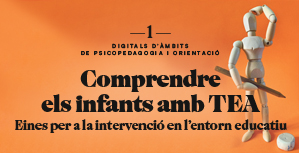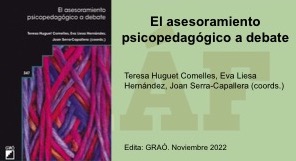Los centros de educación especial, apoyo a la inclusión
DOI:
https://doi.org/10.32093/ambits.vi53.1983Palabras clave:
Educación especial, Centros de educación especial, Inclusión educativa, Cambio educativo, Centros de recursos para la inclusión, Formación de maestrosResumen
Las políticas a favor de la inclusión educativa exigen una reconsideración del papel y de las estructuras de los centros de educación especial. En este artículo, en primer lugar, se analiza la situación desde una perspectiva internacional. Hay acuerdo en la necesidad de superar la separación histórica que ha habido entre la educación especial y la ordinaria, y proponer nuevos roles, nuevos enfoques y perspectivas para conseguir un único sistema educativo sensible a la diversidad de necesidades de los alumnos. A pesar de que la posición no es unánime, la mayoría de los países se inclinan por considerar a los centros de educación especial centros de excelencia en la atención y educación de los alumnos con necesidades de apoyo más extensas y, al mismo tiempo, en organizaciones de apoyo y promoción de la educación inclusiva en el sector de población donde están ubicados.
En segundo lugar, se presenta el proyecto de transformación de los centros de educación especial que DINCAT lideró e impulsó en Cataluña en los inicios de 2016. Los objetivos del proyecto eran, por un lado, promover un cambio en la "mirada" de los profesionales de los centros de educación especial que se tradujera en un cambio en las prácticas, a través de la reflexión, la formación y el acompañamiento; por el otro, ayudar a los centros a que se conviertan en parte de un sistema inclusivo en la comunidad en la que están (barrio, pueblo, comarca); en definitiva, transformarse en centros de recursos para la inclusión.
Finalmente se presenta el programa CEEPSIR ESPIGA-EAP, promovido por el EAP de l’Alt Penedès y l’Escola Delta-Espiga, que nace con la voluntad de avanzar hacia una escuela inclusiva en la comarca en condiciones de equidad y de igualdad de oportunidades. El objetivo principal de este programa es acompañar a los centros educativos a disponer de un protocolo de buenas prácticas educativas para dar respuesta al alumnado con más necesidades de apoyo.
Citas
Agran, M., Jackson, L.,Kurth, A., Ryndak, D., Burnette, K., Jameson, M., Zagona, A., Fitzpatrick, H., i Wehmeyer, M. (2020).Why aren’t students with severe disabilities being placed in general education classroom: Examining the relations among classroom placement, learner outcomes and other factors. Research and Practice for Persons with Severe Disabilities, 45, 4-13.
Ainscow, M. (2007). Toward a more inclusive education. Where next for special schools? A R. Cigman (Ed.), Included or excluded? The challenge of the mainstream for some SEN children (pp., 128-139). London: Routledge.
Baker, J. (2007). The British Government’s strategy for SEN: implications for the role and future development of special schools. Support for Learning, 22, 72-77.
Baker, J. (2009). Special school headship in times of change: impossible challenges or golden opportunities? British Journal of Special Education, 36, 191-197.
Brown-Chidsey, R. i Bickford, R. (2016). Practical handbook of multi-tiered systems of support. Building academic and behavioral success in schools. New York: The Guilford Press.
Decret 150/2017, de 17 d’octubre, de l’atenció educativa a l’alumnat en el marc d’un sistema educatiu inclusiu (DOGC núm. 7477, de 19/10/2017).
Department of Education (2006). The Future Role of the Special School. Ireland.
European Agency for Development in Special Needs Education (2013). Organization of Provision to Support Inclusive Education. Literature review. Odense, Denmark: European Agency for Development in Special Needs Education.
European Agency for Special Needs and Inclusive Education (2015). Agency Position on Inclusive Education Systems. Odense, Denmark. www.european-agency.org/publications.
European Agency for Special Needs and Inclusive Education (2017). Herramienta de autorreflexión para entornos de educación inclusiva en la infancia temprana. (E. Björck-Åkesson, M. Kyriazopoulou, C. Giné y P. Bartolo, eds.). Odense: Dinamarca
Florian, L. (2019). On the necessary co-existence of special and inclusive education. International Journal of Inclusive Educations, 23, 691-704.
Font, J., Castells, M. i Ramon, D. (1016). PACBAL (Prova d’avaluació dels processos bàsics de l’aprenentatge de la lectura). Vic. Escola d’Educació Especial l’Estel.
Font, J. I Giné, C. (2016). Educació especial: Un pas endavant. Reptes. Revista d’Educació Especial i Inclusiva, 1, 26-32.
Font, J. I Simó-Pinatella, D. (2017). El FACTS: Una entrevista per a l’avaluació funcional. Reptes. Revista d’Educació Especial i Inclusiva, 2, 46-49.
Font, J., Simó-Pinatella, D., Alomar, E., Giné, C., Adam, A.L., Dalmau, M., …i Mas, J. (2013). El rol de los centros de educación especial en Catalunya: perspectivas de futur. Siglo Cero, 44, 34-54.
Fuchs, D., Fuchs, L.S. I Stecker, P.M. (2010). The “blurring” of special education in a new continuum of general education placements and services. Exceptional Children, 76, 301-323.
Giangreco, M.F. (2020). “How can a student with severe disabilities be in a fifth-grade class when he can’t do fifth-grade level work?” Misapplying the least restrictive environment. Research and Practice for Persons with Severe Disabilities, 45, 23-27.
Gibbons, K., Brown, S. i Niebling, B.C. (2019). Effective universal instruction. An action-oriented approach to improving Tier 1.New York: The Guilford Press.
Harrison . P.L. i T. Oakland T. (2003). ABAS-II Sistema para la Evaluación de la Conducta Adaptativa. Madrid: TEA Ediciones
Head, G. i Pirrie, A. (2007). The place of special schools in a policy of inclusion. Journal of Research in Special Educational Needs, 7, 90-96.
Hoover, J.F. i Patton, J.R. (2008).The role of special educator in a multitiered instructional system. Intervention in School and Clinics, 43, 195-202.
Hornby, G. (2014). Inclusive special education. Evidence-based practices for children with special needs and disabilities. New York: Springer.
Kauffman, J.M., Anastasiou, D. i Maag, J.W. (2017). Special education at the crossroads: A crisis of identity and the need for a scientific reconstruction. Exceptionality, 2,139-155.
Llei 12/2009, de 10 de juliol, d’educació (DOGC núm. 5422, de 16/7/2009).
McDonnell, J. i Hunt, P. (2014). Inclusive education and meaningful school outcomes. A M. Agran, F, Brown, C. Hughes, C. Quirk i D. Ryndak (Eds), Equity and full participation for individuals with severe disabilities. A vision for the future (pp. 155-176). Baltimore: Paul H Brookes.
McIntosh, K. and Goodman, S. (2016). Integrated multi-tiered systems of support. Blending RTI and PBIS. New York: The Guilford Press.
McMenamin, T. (2011). The tenacity of special schools in an inclusive policy environment: The New Zeeland situation 1996-2010. Support for Learning, 26, 97-102.
Norwich, B. (2008). What future for special schools and inclusion? Conceptual and professional perspectives. British Journal of Special Education, 34, 136-143.
Norwich, B. (2013). Addressing tensions and dilemmas in inclusive education. Living with uncertainty. New York: Routledge.
Norwich, B. i Gray, P. (2007). Special schools in the new era: conceptual and strategic perspectives. A B. Norwich (ed.), Special schools in the new era: how do we go beyond generalities? Paper 2, Special Educational Needs Policy Options Group 6th Series. Tamworth: NASEN.
Pepper, J., Weitzman, E. (2003).Hablando nos entendemos los dos. Toronto: Hanen.
Rogers, S.L., Dawson, G. i Herrera Gutiérrez, G. (2015). ESDM. Lista de verificación del currículo del modelo Denver de atención temprana. Ávila: Autismo Ávila.
Rojahn, J., Matson, J.L., Lott, D., Esbensen, A.J. i Smalls, Y. (2001). The Behavior Problems Inventory: An instrument for the assessment of self-Injury, stereotyped behavior, and aggression/destruction in individuals with developmental disabilities. Journal of Autism and Developmental Disorders, 31, 577-588.
Rose, J. (2012). Building bridges with others schools: educational partnership in separate settings in England. Support for Learning, 27, 84-90.
SEN Policy Opinions Group (2007). Special schools in the new era: how do we go beyond generalities? Journal of Research in Special Educational Needs, 7, 71-89.
Schalock, R. L., Borthwick-Duffy, S. A., Bradley, V. J., Buntinx, W. H., Coulter, D. L., Craig, E. M., …i Yeager, M. H. (2010). Intellectual Disability. Definition, classification and systems of supports. Washington: AAIDD. Traducció al castellà: AAIDD (2011). Discapacidad Intelectual. Definición, Clasificación y Sistemas de Apoyo. Madrid: Alianza Editorial.
Sundqvist, C., Björk-Aman, C. i Ström, K. (2019). The three-tiered support system and the special education teacher’s role in Swedish-speaking schools in Finland. European Journal of Special Needs Education, 34, 601-616.
NU (2006). Convención de las Naciones Unidas sobre los derechos de las personas con discapacidad. Recuperado de: http://www.un.org/spanish/disabilities/
UNESCO (1994). Declaración de Salamanca. Conferencia Mundial sobre Necesidades Educativas Especiales. Acceso y calidad. Madrid: UNESCO/ Ministerio Educación y Ciencia.
NESCO (2014). Teaching and learning: achieving quality for all; EFA global monitoring report, 2013-2014. UNESCO: Paris.
Wehmeyer, M.L. i Shogren, K.R. (2017). Handbook of research-based practices for educating students with intellectual disability. New York. Routledge.

Descargas
Publicado
Número
Sección
Licencia
Los autores/as conservan los derechos de autor y conceden a la revista el derecho de primera publicación de la obra, registrada bajo una licencia Creative Commons Reconeixement-NoComercial-Sense Obra Derivada. Esta licencia permite la descarga de las obras y que se puedan compartir con otros siempre que se reconozca la autoría, pero no permite que se modifiquen de ninguna forma ni ser utilizadas con finalidad comercial.














